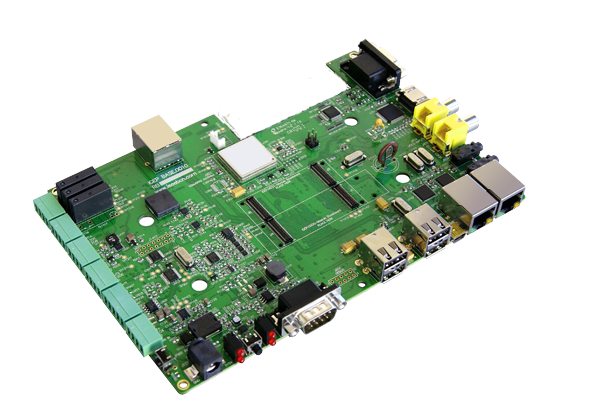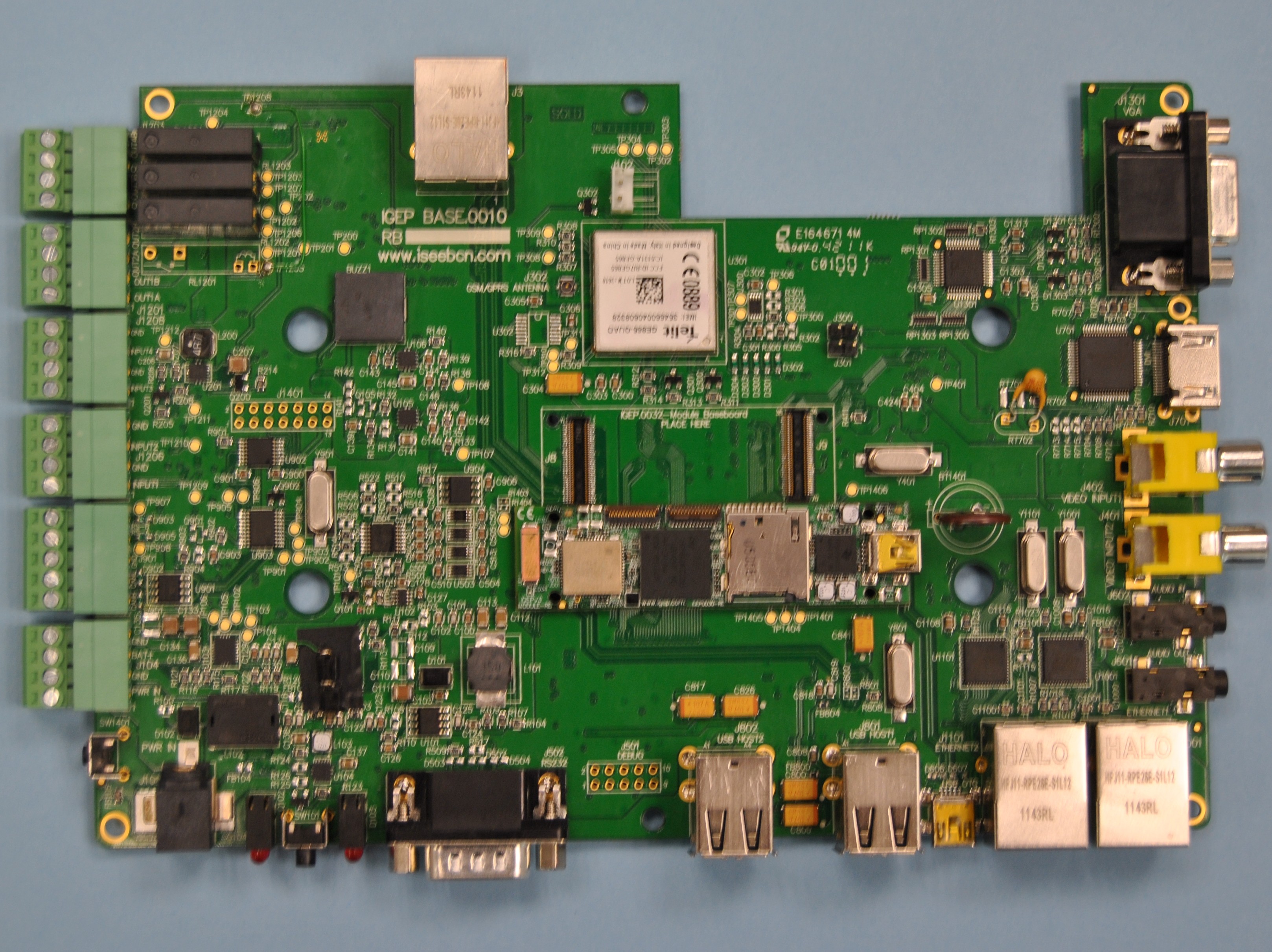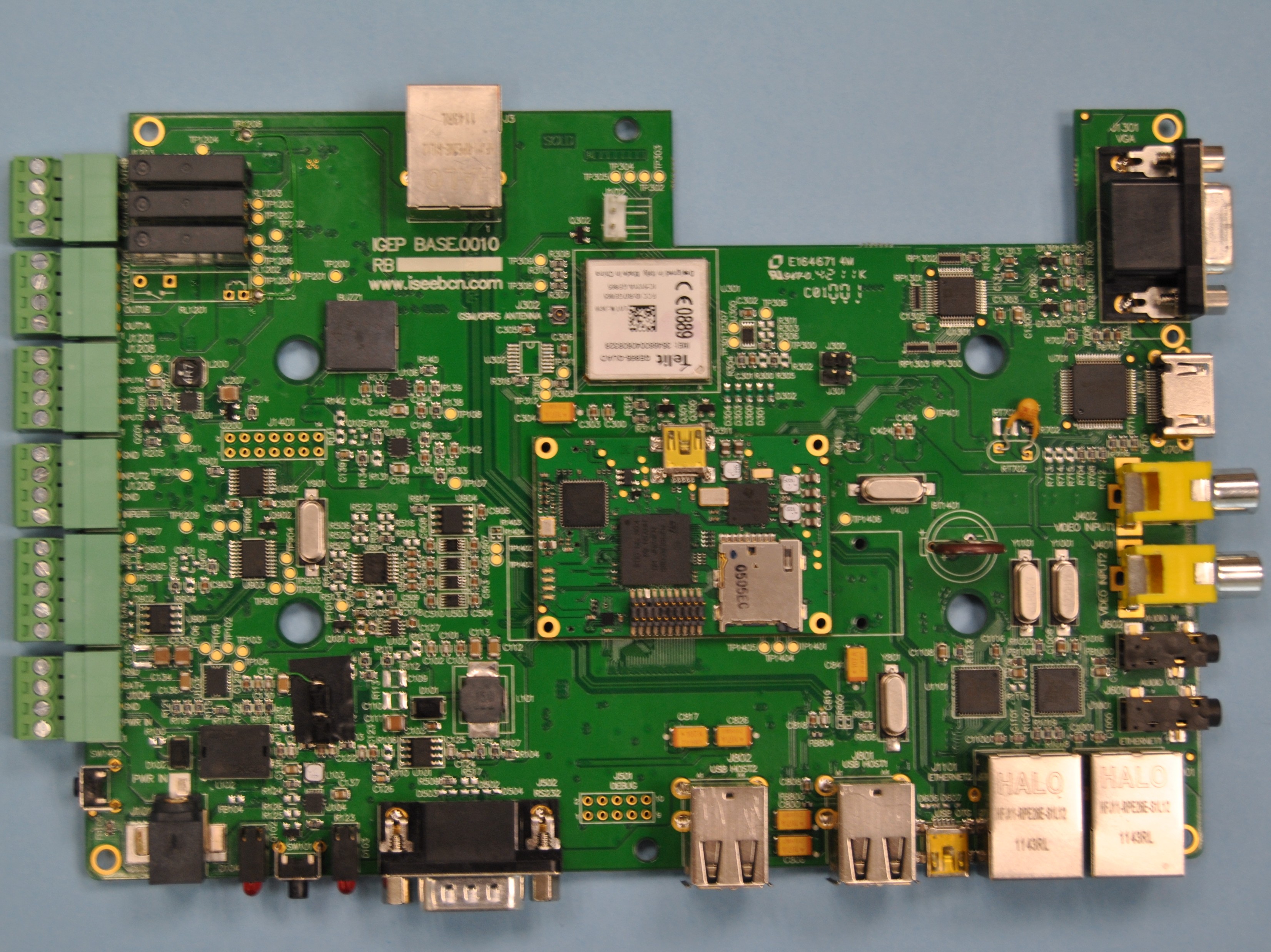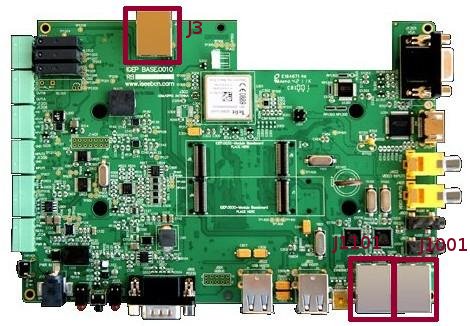Getting started with IGEP BERLIN
From IGEP - ISEE Wiki
|
|
Overview
This is the 1/3 chapter of IGEP BERLIN Expansion Tutorial Guide.
In this first chapter, we will learn how to connect some expansion peripherals.
Contents
Requirements
In this tutorial we are going to use the following peripherals:
- IGEP COM MODULE or IGEP COM PROTON
- IGEP BERLIN Expansion
- 5V DC power supply with a minimum of 3A current capacity
- TFT touch screen Seiko 7"
- Monitor compatible with DVI-D or VGA
- HDMI/DVI-D cable or VGA cable
- Network cable
- Composite video cable, composite video output peripheral (PAL or NTSC)
- SIM card with an antenna
- USB keyboard and a mouse (optional)
- Li-on battery with 3V3 (optional)
- DB9 connector
- PC
Getting started
Connect IGEP BERLIN Expansion with IGEP COM MODULE/NEUTRON Board
The IGEP BERLIN Expansion connects to the IGEP COM MODULE/NEUTRON Board through J1 and J4 connectors. Just take a look on the figure below to mount it:Connect IGEP BERLIN Expansion with IGEP COM PROTON Board
The IGEP BERLIN Expansion connects to the IGEP COM PROTON Board through J1, J4, J8 and J9 connectors. Just take a look on the figure below to mount it:Enable IGEP BERLIN Expansion support
IGEP Yocto Firmware comes with IGEP BERLIN Expansion support. However open igep.ini, you can do this checking following kernel cmdline parameter:
buddy=base0010 buddy.revision=B ;buddy=ilms0015
Ethernet Network cable
Plug an Ethernet cable between IGEP BERLIN and your client machine (or any other network device with Ethernet connectivity). Use J3 connector with IGEP PROTON and J1001 connector with IGEP MODULE.
Remote connection via Ethernet

|
If you aren't using a Linux operating system, use IGEP SDK Virtual Machine to connect to the board |
In your Host Machine, open a terminal sessions set up an Ethernet alias for your network interface,
$ sudo ifconfig eth0:0 192.168.5.10
connect to the board using the SSH protocol
$ ssh root@192.168.5.1
an empty password for root user should work to access to the shell prompt.
You have successfully completed this chapter of the guide.
|

|
If you have any question, don't ask to ask at the IGEP Community Forum or the IGEP Community Chat | 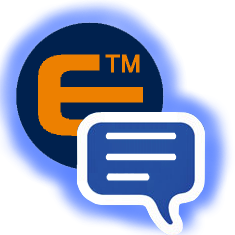
|



